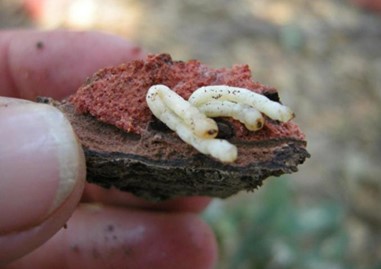Gold spotted oak borer larvae (GSOB) is a flat-headed worm first introduced in San Diego, California. It was presented at the end of the 1990s and early 2000s. Since 2000, GSOB has caused numerous injuries to the oaks in woodlands and some other forests in
San Diego. GSOB mainly attacks oak trees and prefers red oak, including coast live oak. The Red oaks are a common component of forests in California. Gold spotted oak borer has a single life generation every year. In California, the female gold spotted worm lays eggs inside the oak trees. The eggs are tiny, oval-sized, and nearly 0.25 mm in diameter. The eggs are laid on the surface of barks singly or in bunches. The eggs are so small that they are very hard to locate on the trees.
What is a Gold spotted oak borer?
Agrilus auroguttatus, commonly known as a gold spotted oak borer, is native to Southeastern Arizona. It is a fast-growing pest and is one of the biggest threats to California’s oak trees. It was first detected in California in San Diego County in 2004, not expected to cause much damage to oak trees until 2008. Till 2010, GSOB killed approximately 21,500 oak trees covering 1,893 square miles in San Diego County parks, forests, and others. Gold spotted oak worm is named gold spotted because it has golden brown spots on its body surface. The adult worm is dark metallic green and has yellowish- golden spots.
Gold Spotted Oak Borer Larvae
The eggs are tiny, oval-sized, and nearly 0.25 mm in diameter. The eggs are laid on the surface of barks singly or in bunches. It is hard to locate eggs on the trees.
On the other hand, the larvae are white, legless, and have C-shaped breathing holes or spiracles. It has thin spins on its surface and two spins at the tip of an abdomen. The larvae are so small that they are negligible to see. They can only be visible when we cut the infested oak deeply from inside. The mature or adult gold spotted borer is dull dark metallic green in color and has dark yellowish-golden spots on its body. It has the most prominent color but is still very hard to see because it is about a centimeter long.
Gold Spotted Oak Borer Treatment
Gold spotted oak worm (GSOB) infestation is not necessary for the early stages of injury. The large-diameter oak trees, about 18 inches in diameter, are more likely susceptible to infestation, which should be surveyed first and treated well. Inspection of the trees for injury
symptoms is most important at least once a year. The injury symptoms include crown thinning, bark staining, woodpecker, and D-shaped emergence holes. Trees with excessive crown thinning and emergence holes on the trunk are considered highly infested and are more likely to die and expire in the coming years. The damaged oaks have severe involvement in the atmosphere, environment, and human health and safety. Due to this current situation and impact on California oak trees, public and private organizations are working hard together in the research against its treatment.
Gold Spotted Oak Borer Damage
The gold spotted worm is a threat to oak trees in California. It was first introduced in California and has since killed approximately thirty to thirty-two oak trees in San Diego, California. This gold spotted worm larva feeds beneath the bark of oak trees and destroys the vital tissues of the stem and the oak branches. Generally, after a few years, the infestations can lead the trees to decline and expire from the damage caused by several generations of this worm. The damage was first seen in Descanso, California, where 67% of the oaks were destroyed due to the gold spotted worm, and about 13% were dead.
Gold Spotted Oak Borer Facts
Gold spotted oak borer larvae (GSOB) is a flat-headed worm first introduced in San Diego, California. It is a fast-growing pest and is one of the biggest threats to California’s oak trees.
It was introduced at the end of the 1990s and early 2000s. Since 2000, GSOB has caused numerous
injuries to the oaks in woodlands and some other forests in San Diego. It was first detected in California in San Diego County in 2004 but unexpectedly caused much damage to oak trees until 2008. Till 2010, GSOB killed approximately 21,500 oak trees covering 1,893 square miles in San Diego County parks and forests. Due to this current situation and impact on California oak trees, public and private organizations are working hard together in the research against its treatment.



